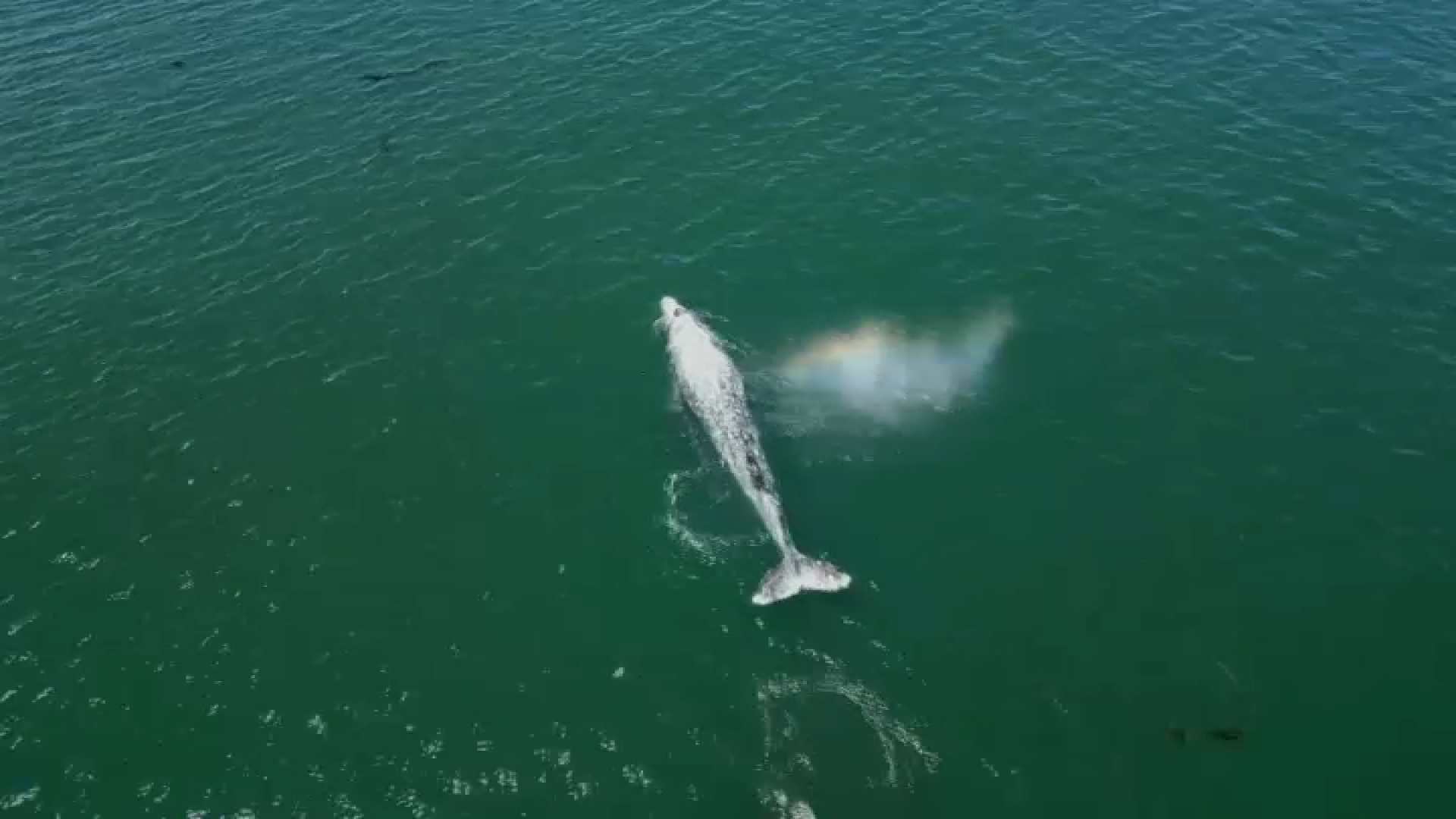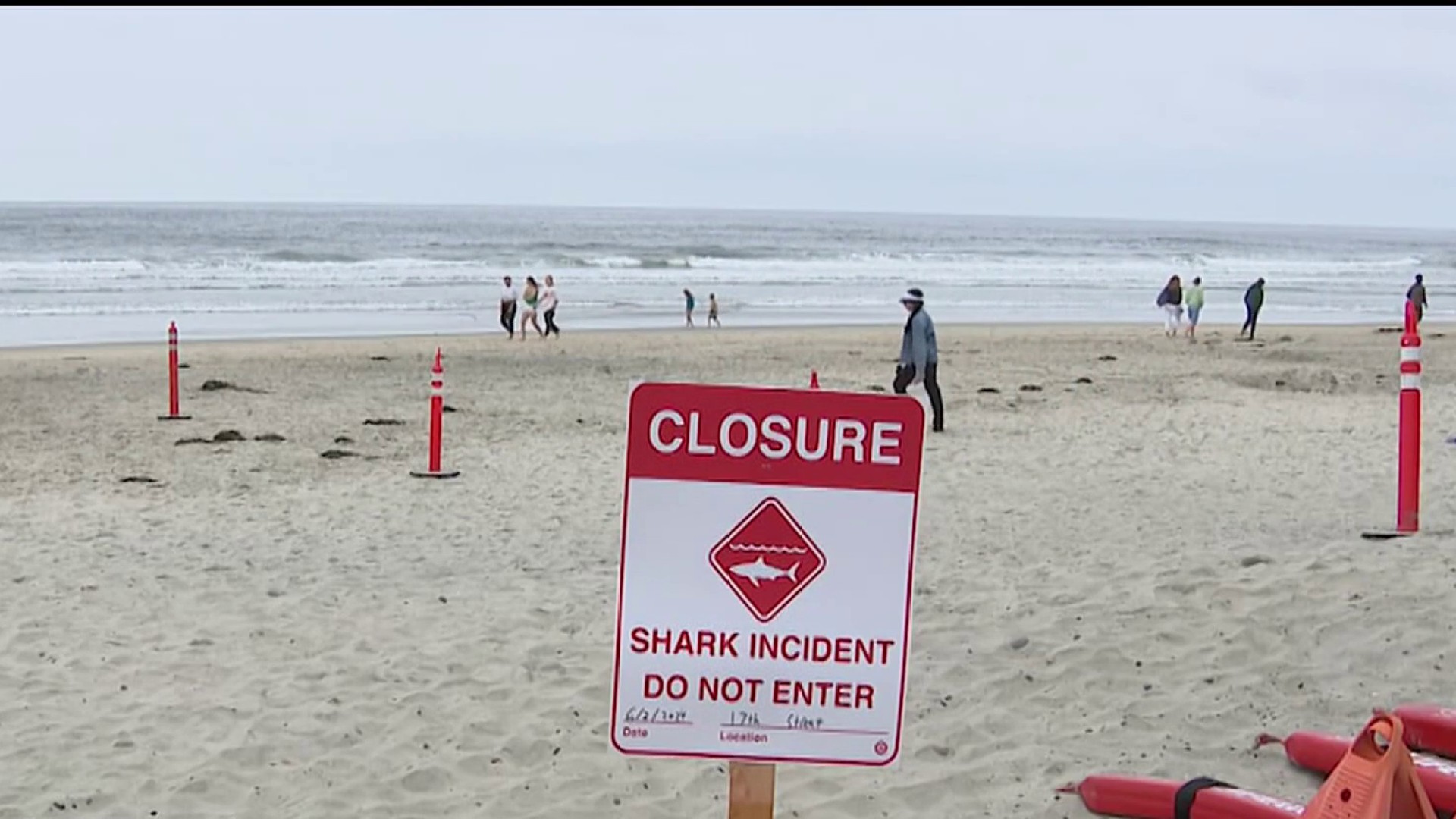Blue whales were swimming off San Diego's coastline earlier this year and closer to shore, an atypical pattern that has allowed marine researchers to study the world's largest animal up close and has given whale watchers some extraordinary viewing experiences.
A pod of blue whales was exceptionally close to the Scripps Pier in La Jolla on May 30 and Scripps Institution of Oceanography's Michaela Alksne knew this was her chance to test a new marine research tool that they hope will allow scientists to collect and study whale DNA.
"Having the blue whales really, really close to where our whole research facility has enabled us to do this awesome calibration study," said Alksne, a PhD candidate with Scripps's Acoustic Ecology Lab.
Get top local stories in San Diego delivered to you every morning. Sign up for NBC San Diego's News Headlines newsletter.
With clear, plastic buckets in tow, Alksne and her colleagues took a small boat as close as legally possible to these marine mammals and scooped up the rippling water left behind by their "flukeprints." Net Zero Expeditions captured their work via drone. The researchers took the samples back to their lab where they used a filter to separate out larger cells and froze them. In a few weeks, they hope what's left behind is samples of blue whale DNA, proving the collection method worked.
"A current research question among the marine mammal community is, 'Can we leverage that environmental DNA, as we call it, to actually detect the whales without having to biopsy them? Without having to go on a ship with binoculars and see them or monitor their sounds?'" Alksne said. "Can we just scoop up a water sample and say, 'Oh, there was X amount of blue whales in this region or there's X amount of blue whale genetic material in this area.'"
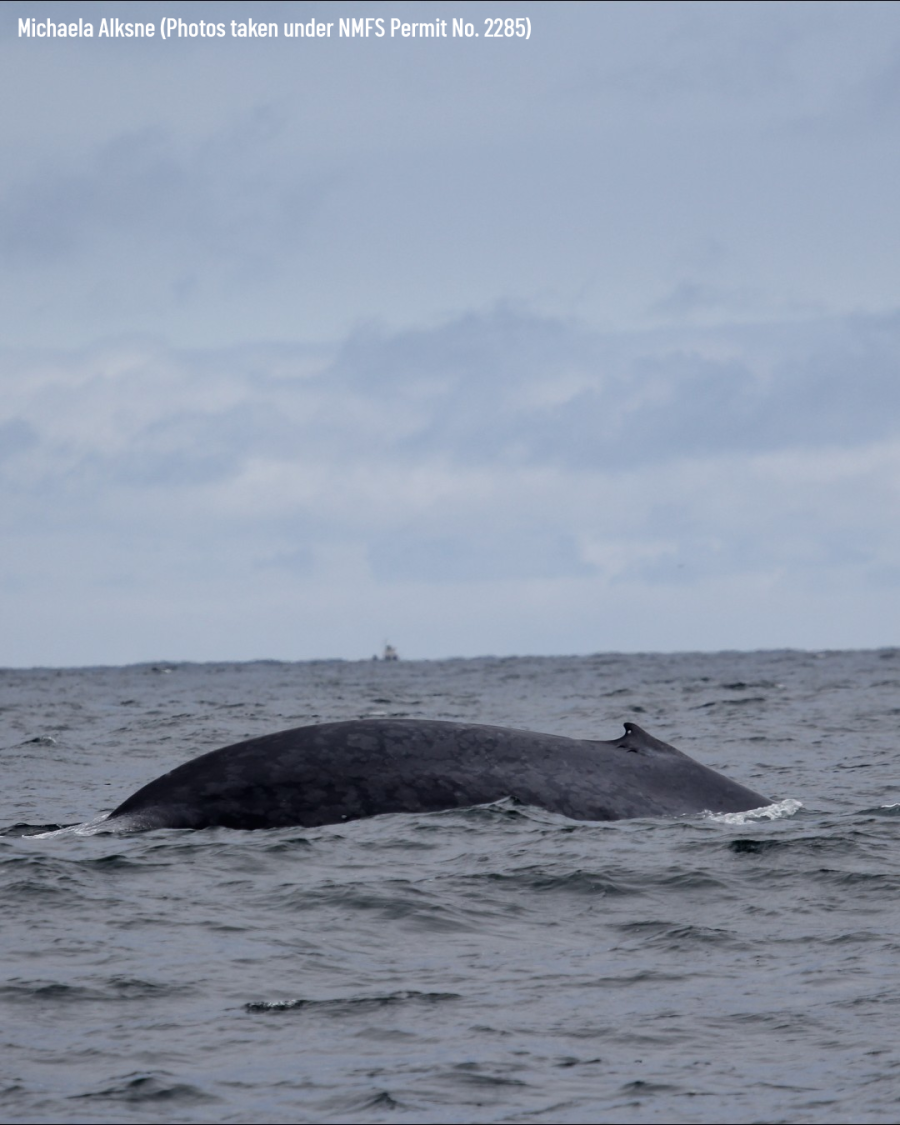
If the method sounds familiar, it may be because other labs across the globe are testing to see if eDNA is a feasible research method. Cal State Long Beach's Shark Lab recently tested the technology when monitoring Del Mar beach after a great white shark attack.
If proven successful, the technology could provide researchers with a more cost-effective, non-invasive way to monitor marine species and help their conservation.
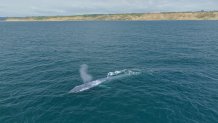

Blue whales are endangered and only about 3,000-5,000 migrate off the Pacific Coast, traveling north from Mexico from about June to early October foraging for food after their mating season.
This year, blue whales -- and lots of them -- were spotted off San Diego's coast in early May. Whale watching groups up and down the Southern California coast have reported frequent sightings.
San Diego Whale Watch said their first sighting of the season was on April 21 and regular sightings started around May 6. In some instances, the sightseeing group says, guests were able to witness up to 10 blue whales per tour.
Jessica Rodriguez, education manager of Davy's Licker Whale Watching, noted the same for their tour groups off the coast of Newport Beach.
"Not often do we see 15-plus blue whales within the two-mile radius of Newport Harbor. Everywhere you look, there's spouts. And it's almost like the end of a fireworks show, like you don't know which direction to look," Rodriguez said.
Typically, in an El Nino season such as this year's, blue whale sightings would be lower due to warmer waters, which produce less of a food source for the cetacean. But one reason blue whales may be more visible this year is an increase in phytoplankton, similar to the ones that create bioluminescence in our waters.
"We think, at least the running hypothesis is, that all of those red tides have caused secondary blooms of zooplankton including the prey of blue whales being krill, and that's what's brought them to our shores," Alksne said. "The phytoplankton that are blooming in the red tide... we believe that they're prey of krill."
The blue whale, despite its 90-foot length and up to 150-ton weight, is not easy to spot. The creature comes up for air only every about 8 minutes and does not breach like other species. Instead, the sign of a blue whale in the area is typically its blow, which can reach up to 30-feet into the air, and its fluke as it dives back down for food.
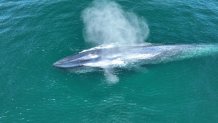

"Although it is not unusual to see them in the summertime here in Southern California, if you're looking globally, it is a very unique experience to be able to see blue whales in the wild," Rodriguez said. "Only 1% of the human population will ever be in the presence of blue whales."
For those who want to take advantage of the potential increase in blue whales off our coast, do so sooner rather than later. Rodriguez said that it's not predictable exactly when and where you'll see blue whales during their migration season. Once the food source is gone, so are the whales.
"So, that experience of having them so close to the coastline over the last two weeks could be fleeting."

